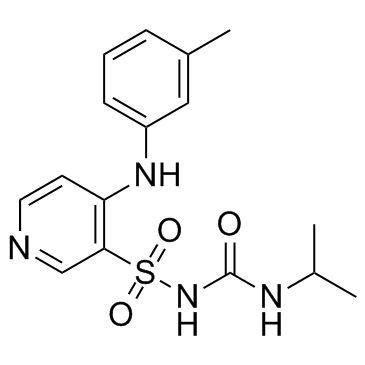Torsemide: a new loop diuretic.
S F Fowler, K M Murray
文献索引:Am. J. Health Syst. Pharm. 52(16) , 1771-80; quiz 1814-5, (1995)
全文:HTML全文
摘要
The pharmacology, pharmacokinetics, clinical efficacy, adverse effects, and dosage and administration of torsemide are reviewed. Torsemide belongs to the pyridine-sulfonylurea class of loop diuretics. Its primary site of activity is the thick ascending limb of the loop of Henle, where it blocks active reabsorption of sodium and chloride, resulting in diuresis, natriuresis, and other effects. Torsemide has high bioavailability, a relatively long half-life, and a prolonged duration of activity. It is highly protein bound. Clinical trials indicate that torsemide is effective in the treatment of hypertension and of edema and other symptoms in patients with chronic renal failure (CRF), hepatic dysfunction, or congestive heart failure (CHF). Torsemide has infrequent, mild, and transient adverse effects; among the most common are orthostatic hypotension, fatigue, dizziness, and nervousness. The recommended initial oral dosages of torsemide are 10-20 mg/day for CHF, 20 mg/day for CRF, 5 mg/day for hypertension, and 5-10 mg/day (in combination with a potassium-sparing diuretic or aldosterone antagonist) for hepatic cirrhosis. In most patients, the pharmacokinetic advantages of torsemide over other loop diuretics are unlikely to translate into a substantial edge in clinical outcomes, and in practice there may be no cost advantages. Although torsemide does not offer major advantages over other loop diuretics, it may be of benefit in patients who do not respond to or cannot tolerate other agents.
相关化合物
| 结构式 | 名称/CAS号 | 分子式 | 全部文献 |
|---|---|---|---|
 |
托拉塞米
CAS:56211-40-6 |
C16H20N4O3S |
|
Determination of torasemide by fluorescence quenching method...
2013-10-01 [Spectrochim. Acta. A. Mol. Biomol. Spectrosc. 114 , 547-52, (2013)] |
|
Dominance of furosemide for loop diuretic therapy in heart f...
2013-04-09 [J. Am. Coll. Cardiol. 61(14) , 1549-50, (2013)] |
|
Loop diuretics: comparison of torsemide, furosemide, and bum...
1996-06-01 [Conn. Med. 60(6) , 343-5, (1996)] |
|
Should torsemide be the loop diuretic of choice in systolic ...
2012-09-01 [Future Cardiol. 8(5) , 707-28, (2012)] |
|
Torsemide: a pyridine-sulfonylurea loop diuretic.
1995-04-01 [Ann. Pharmacother. 29(4) , 396-402, (1995)] |